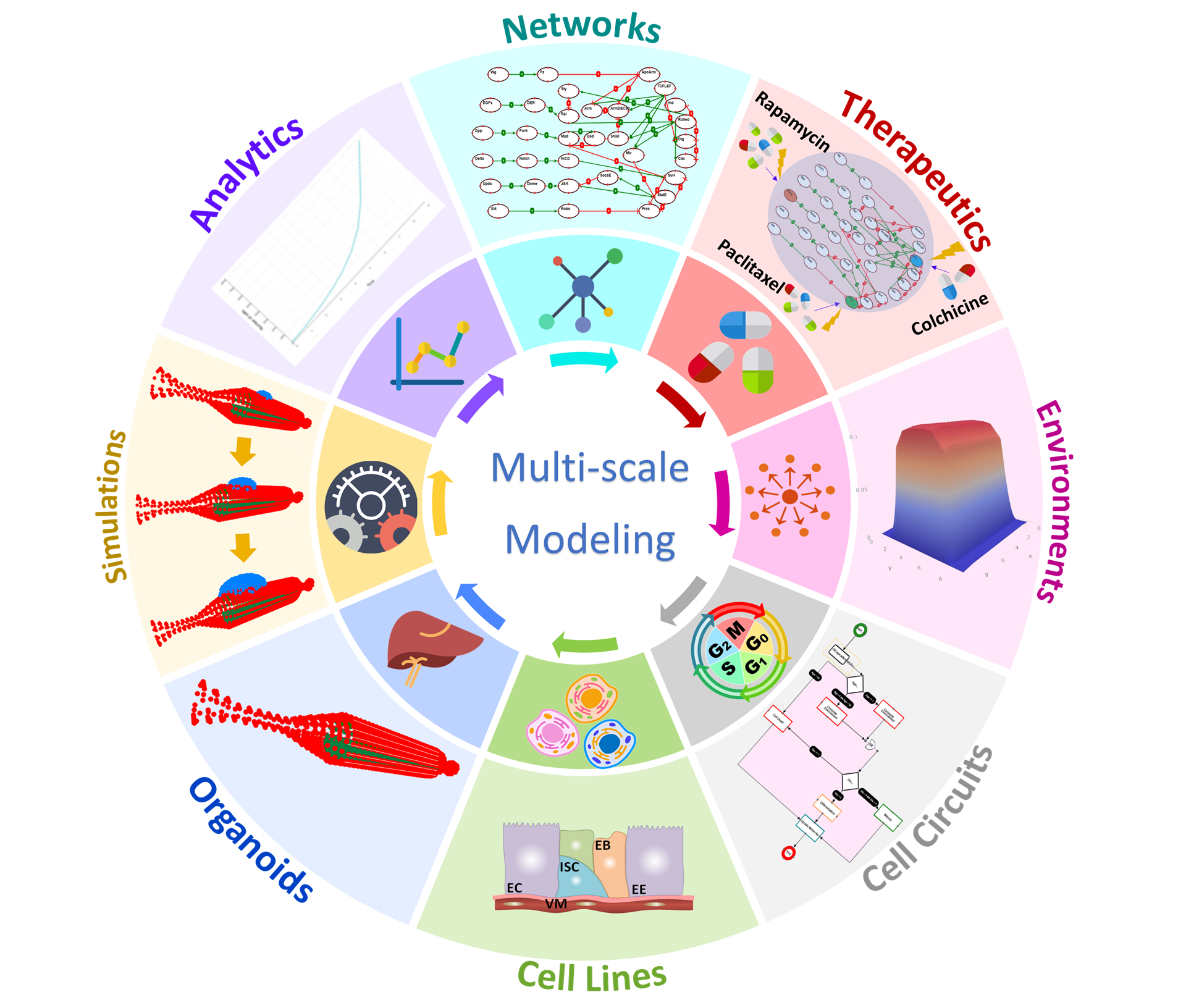
Investigating Multiscale Tumorigenesis in Head and Neck, and Pancreatic Cancer towards Personalized Therapeutics
Abstract I:
Multi-scale models integrating omics data coupled with extracellular microenvironments can assist in decoding the complex mechanisms underlying system-level diseases such as cancer. To investigate the emergent properties and clinical translation of such cancer models, we aim to develop the Theatre for in silico Systems Oncology (TISON, https://tison.lums.edu.pk ), a next-generation web-based multi-scale modeling and simulation platform for in silico systems oncology. TISON envisages a “zero-code” environment for multi-scale model development by seamlessly coupling scale-specific information from biomolecular networks, microenvironments, cell decision circuits, in silico cell lines, and organoid geometries. A simulation engine and data analysis features will be provided for computing the temporal evolution of multi-scale models. Here, we propose to employ the platform for clinical systems oncology - TISON for modeling two cancer types (1) head and neck squamous cell carcinoma (HNSCC) and (2) pancreatic cancer (PC). In Pakistan, HNSCC is the most common type of cancer in males and second most common cancer in females. On the other hand, pancreatic cancer (PC) stood as the deadliest cancer type with an astonishingly high mortality rate of 97.8% within Pakistan. Globally, HNSCC is the 7th most common cancer type whereas PC stands as the 12th most common cancer, owing to the late-stage diagnosis, aggressive local invasion and metastasis, disease recurrence and therapy resistance to chemotherapeutic drugs. To address the gap in current treatment modalities, there is a dire need to develop personalized treatment of cancer comprising single and/or combination therapies for HNSCC and PC patients based on the mutational and gene expression profiles. Towards this goal, we will develop biomolecular networks for HNSCC and PC, incorporate the random and systematic perturbations to assess the biological plausibility of the models. Next, we will acquire the RNA-Seq data from online repositories, perform data normalization, followed by the annotation towards personalizing and dynamically analyzing the networks via TISON. Later, these validated network models will be exhaustively screened to identify the efficacious target nodes which will be queried in the drug databanks to formulate the optimal therapeutic cocktails. The salient outcome of this project will be next-generation personalized precision therapies for HNSCC and PC patients in Pakistan using our in-house platform TISON.
Alongside, we aim to fingerprint heavy metal and microbial contamination to decode the unprecedented scale of water pollution and its implication on human health around transboundary Hudiara drain in South Asia.
Abstract II (Team project)
Environment and health hazards posed by the contamination of existing underground water resources are amongst the leading anthropogenic challenges in South Asia. One such major environmental hazard is posed by the transnational wastewater drain – Hudiara, which is degrading the quality of underlying aquifers. Towards a spatiotemporal assessment of Hudiara’s wastewater quality and drinking water from its adjoining areas, a total of 56 wastewater and 42 drinking water samples were obtained over seven months. Analysis of spatiotemporal data revealed a complex interplay of geogenic and anthropogenic factors underlying the HM burden leading to a high contamination factor(CF) (>6 for Mercury in wastewater and >150 for Arsenic in drinking water) and heavy metal pollution index(HPI) (>100 for 9 heavy metals). Moreover, high health risk assessment(HRA) scores (>1 for Arsenic, Mercury, Chromium, Lead, Cadmium, and Copper) indicated the unprecedented scale of drinking water contamination. A concomitant public health survey conducted in the surrounding population reported a high prevalence of gastrointestinal diseases (40%), chronic obstructive pulmonary diseases (COPD) (38.7%), dermatitis (34%), bone deformities (31%), and hepatic disorders (12%). Lastly, 16S rRNA sequences of Hudiara were submitted to the Comprehensive Antibiotic Resistance Database (CARD) and point mutations in the sequences were potentially found to confer antimicrobial resistance (AMR) against three classes of drugs including aminoglycosides, peptides, and tetracyclines. Taken together, this pilot study attempts to uncover the unprecedented scale of water contamination along the transboundary Hudiara drain thus highlighting the critical need for international regulatory action towards ameliorating its catastrophic effects on the environment.
PhD Committee Members:
- Dr. Safee Ullah Chaudhary (Supervisor)
- Dr. Amir Faisal
- Dr. Muhammad Tariq

